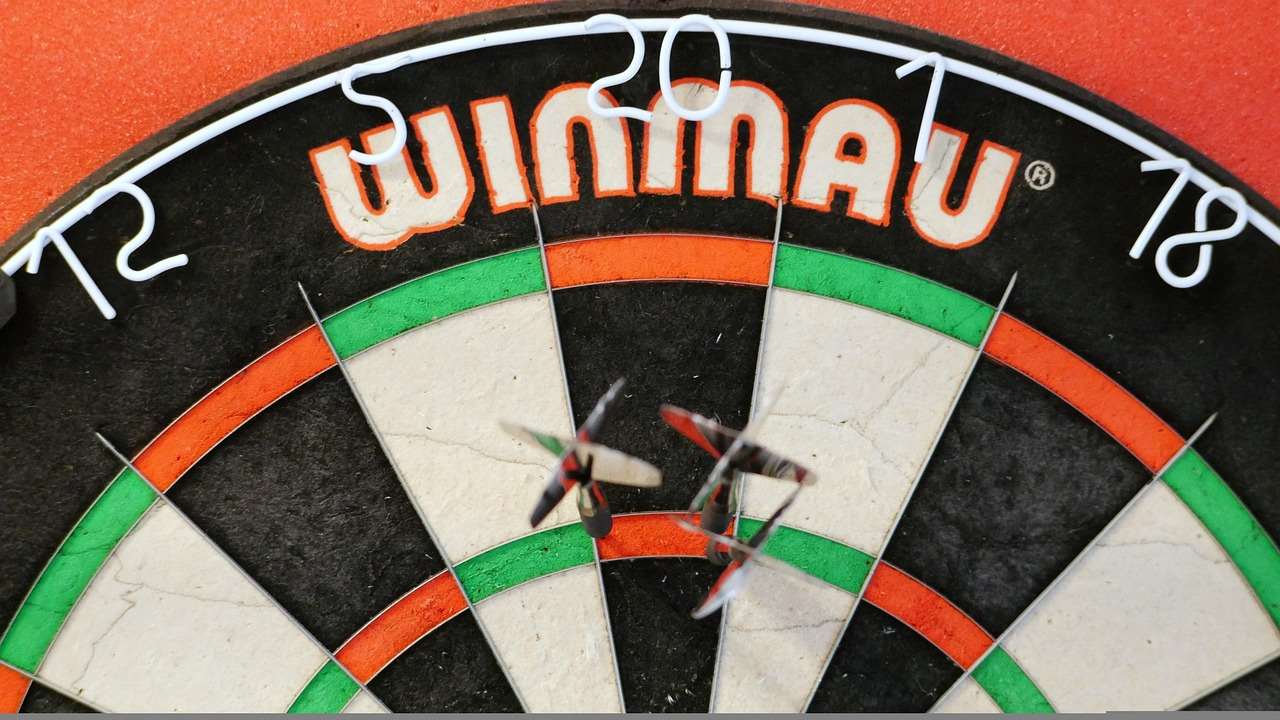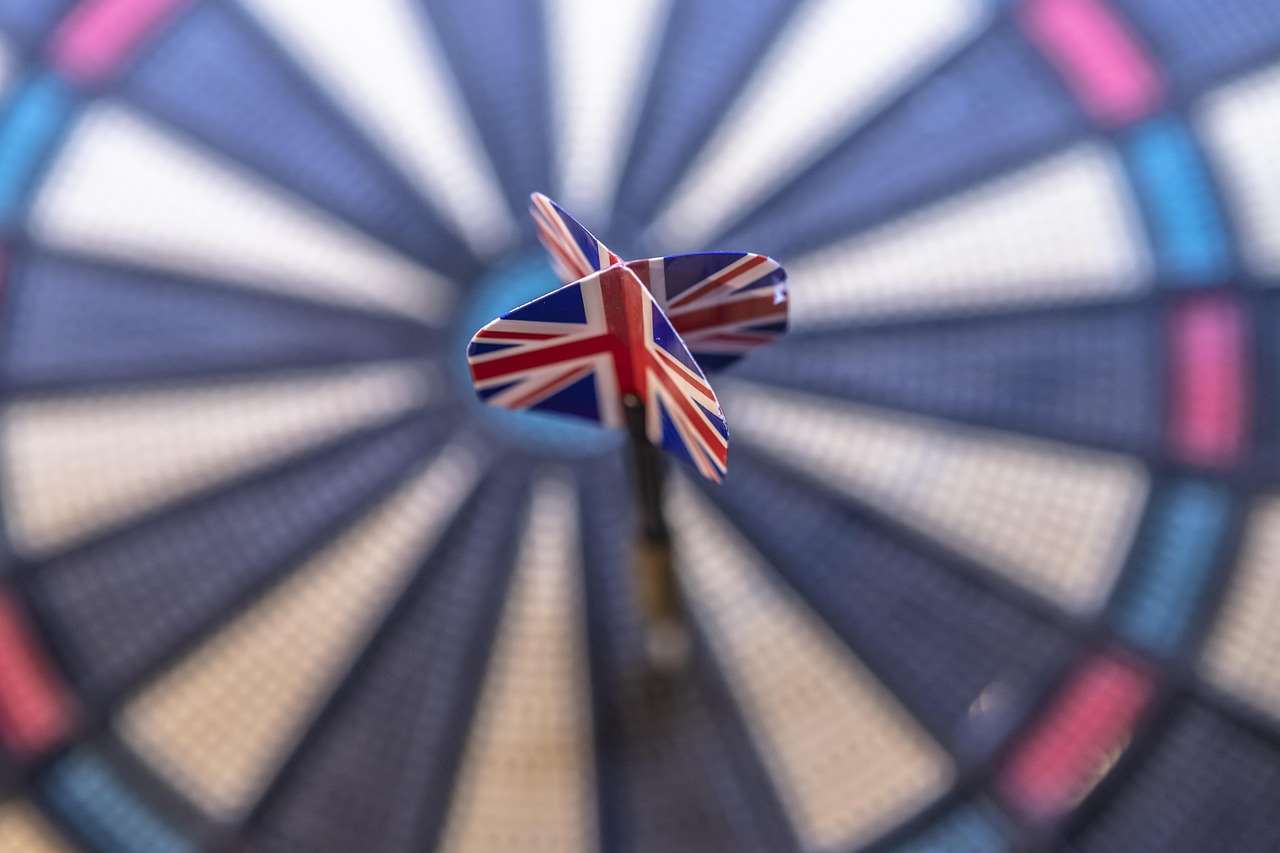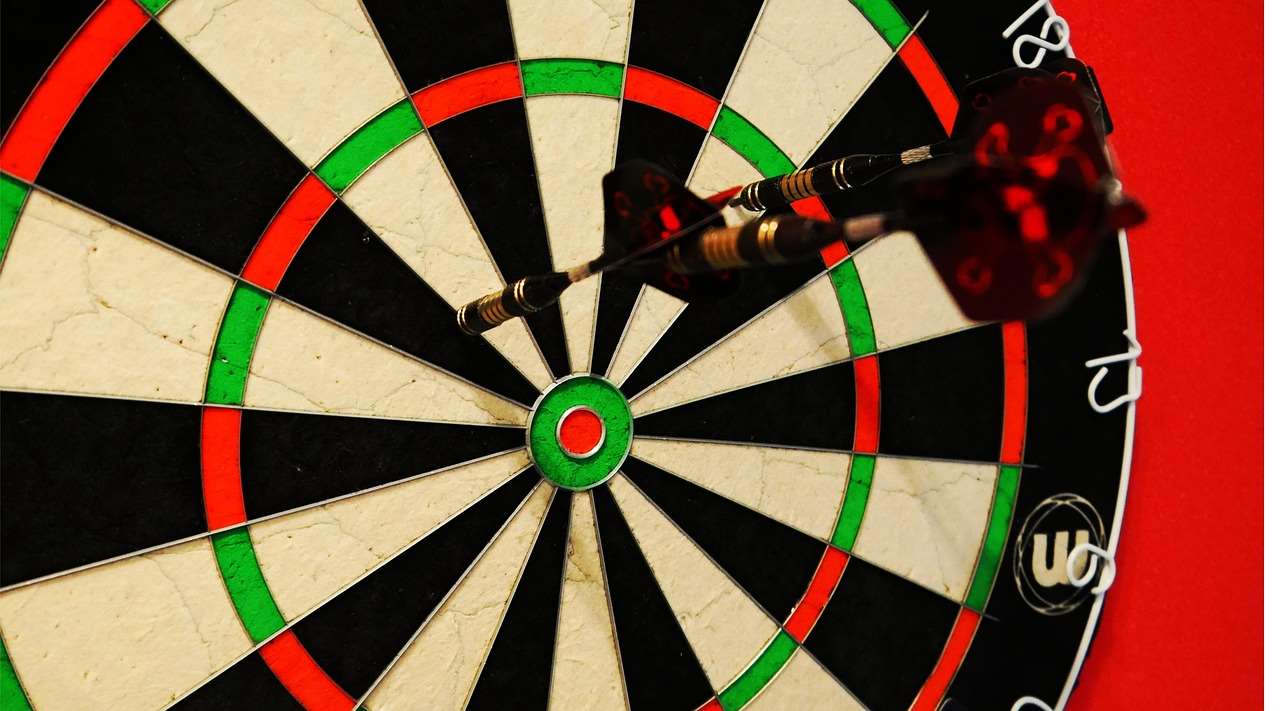The dimensions of a dartboard are far more than just numbers; they directly shape strategy, influence aiming points, and ultimately affect your scoring potential, highlighting **how dartboard dimensions influence gameplay and scoring**. This article dives deep into the impact of each measurement, exploring how they dictate the flow of the game and offer insights into mastering the art of darts. You’ll discover the standardized measurements, their effects, and how to leverage this knowledge to improve your game.
⚠️ Still Using Pen & Paper (or a Chalkboard)?! ⚠️
Step into the future! The Dart Counter App handles all the scoring, suggests checkouts, and tracks your stats automatically. It's easier than you think!
Try the Smart Dart Counter App FREE!Ready for an upgrade? Click above!
Understanding Standard Dartboard Dimensions
The world of darts adheres to a strict set of standards governed by organizations like the World Darts Federation (WDF). These standards ensure fair play and consistency across all levels of competition. Understanding these dimensions is crucial for anyone serious about improving their game and appreciating **how dartboard dimensions influence gameplay and scoring**. Let’s break down the key measurements:
- Overall Diameter: The entire dartboard must measure 17 ¾ inches (451 mm) in diameter.
- Playing Surface Diameter: The actual scoring area, from the outer edge of the double ring to the outer edge of the double ring on the opposite side, is 13 ½ inches (340 mm).
- Bullseye Diameter: The very center, the coveted bullseye, has a diameter of 12.7 mm (0.5 inches).
- Double and Treble Ring Width: Both the double and treble rings are 8 mm (0.31 inches) wide. This narrow space demands precision and elevates the risk-reward aspect of aiming for these high-scoring zones.
- Wire Thickness: The wires separating each section are thin, usually round, and are a critical aspect of **dartboard design**. Their thickness is carefully controlled to minimize bounce-outs and maximize the scoring surface area.
These dimensions aren’t arbitrary; they’re the result of decades of refinement to create a balanced and challenging game. Deviations from these standards, even slight ones, can significantly alter the difficulty and fairness of play.

How Key Dartboard Measurements Impact Gameplay
Each dimension on a dartboard plays a vital role in shaping the game’s dynamics. Understanding these influences is key to optimizing your strategy and improving your score. The standard measurements dictate **how dartboard dimensions influence gameplay and scoring** in several key ways:
The Bullseye: A Small Target with Big Rewards
The relatively small size of the bullseye presents a significant challenge. Its central location makes it a prime target, offering 50 points for a direct hit. However, its diminutive size demands extreme accuracy. Missing the bullseye can result in drastically lower scores, making it a high-risk, high-reward shot. Mastering the bullseye is a crucial element of advancing in the game and understanding **dart throwing accuracy**.
Double and Treble Rings: Precision Under Pressure
The narrow width of the double and treble rings adds another layer of complexity. These rings, especially the treble 20, are primary targets for players seeking high scores. The small area requires exceptional precision; even a slight deviation can result in a significantly lower score. This pressure forces players to develop consistent throwing techniques and mental fortitude.
The Overall Diameter and Segment Size: Dictating Strategy
The overall diameter and the size of each segment influence the strategic approach to the game. The arrangement of numbers around the board, combined with the segment sizes, creates varying degrees of difficulty for each target. Understanding these variations allows players to develop strategies that maximize their scoring potential. For example, the placement of the 20, flanked by the 1 and 5, highlights the importance of accuracy to avoid costly misses.

The Impact of Board Material and Wire Design
While the dimensions are crucial, the materials used in the dartboard’s construction and the design of the wiring also contribute significantly to gameplay. Sisal fiber boards are the standard for professional play due to their self-healing properties and reduced bounce-outs. The density and quality of the sisal affect the dart’s penetration and retention, directly influencing scoring consistency. Furthermore, learning Basic Darts Fundamentals for Beginners can improve your technique.
The wiring system, particularly the thickness and shape of the wires, plays a crucial role. Thinner wires and blade-style wiring systems minimize bounce-outs, allowing darts to slide into the scoring area more easily. This design element has evolved over time to improve the overall playing experience and reduce frustration for players. This affects **dartboard maintenance** and **dart grip techniques**.
Bounce-Outs and Scoring Frustration
Bounce-outs occur when a dart hits the wire and deflects away from the scoring area. This is a common frustration for players of all skill levels. The frequency of bounce-outs depends on several factors, including the wire thickness, the angle of impact, and the dart’s point. Minimizing bounce-outs is a key design consideration for dartboard manufacturers.
Modern dartboards often feature thinner, blade-like wiring systems designed to reduce the surface area of the wire and increase the likelihood of the dart sliding into the scoring area. This innovative design has significantly improved the overall playing experience and reduced the frustration associated with bounce-outs. Remember to consider **dart throwing techniques**.
How Dartboard Dimensions Influence Gameplay and Scoring: Practical Applications
Understanding **how dartboard dimensions influence gameplay and scoring** isn’t just theoretical; it has practical implications for your game. Here are some ways you can leverage this knowledge:
- Target Prioritization: Focus on mastering the treble 20, but also develop consistent throws for other high-scoring areas like the treble 19 and bullseye.
- Aiming Adjustments: Be aware of the subtle differences in segment sizes and adjust your aiming accordingly. For example, the segment for the number 3 is narrower than the segment for the number 17.
- Equipment Selection: Choose darts with appropriate weight and grip to maximize control and accuracy. Consider the points of your darts as well; sharper points are less likely to cause bounce-outs.
- Practice Drills: Incorporate practice drills that focus on specific targets and improve your consistency. Focus on **darts game strategy** during practice.
- Mental Preparation: Develop a pre-throw routine that helps you focus and maintain composure, especially when aiming for high-pressure targets like the double ring.

Strategic Thinking Based on Dimensions
Successful darts players are strategic thinkers who understand the nuances of the dartboard layout. They use this knowledge to develop game plans that maximize their scoring potential and exploit their opponent’s weaknesses. This involves carefully considering which targets to aim for based on the current score, the opponent’s position, and the remaining darts in the round.
For example, a player might choose to aim for the treble 19 instead of the treble 20 if they are feeling slightly off their game. The treble 19 offers a safer alternative with a lower risk of scoring a single-digit value. Alternatively, if a player needs a specific score to win the game, they might need to aim for a less conventional target, requiring precise knowledge of **darts scoring systems**.
Variations in Dartboard Dimensions: A Note of Caution
While standard dimensions are the norm in professional and competitive play, variations exist, particularly in less formal settings or with novelty dartboards. These variations can significantly alter the game’s difficulty and fairness. Always be aware of the dimensions of the dartboard you are using and adjust your game accordingly. Understanding **how dartboard dimensions influence gameplay and scoring** allows you to adapt effectively to these variations.
Electronic Dartboards and Their Dimensions
Electronic dartboards, often used in recreational settings, may have slightly different dimensions or segment designs compared to traditional sisal boards. These differences can affect scoring and gameplay. For example, the segments on electronic boards may be slightly larger or smaller, and the bullseye may be a different size. Furthermore, remember to review **darts safety tips**.
It’s important to familiarize yourself with the specific dimensions of any electronic dartboard you are using to ensure fair and accurate gameplay. Some electronic boards also offer variations in game rules and scoring options, adding another layer of complexity. Playing various Fun dart game variations with modified rules is a good way to improve your skills.

Advanced Strategies Based on Dartboard Dimensions
For advanced players, the subtle nuances of dartboard dimensions become even more critical. Mastering these details can provide a competitive edge and elevate their game to the next level. Here are some advanced strategies that leverage the knowledge of **how dartboard dimensions influence gameplay and scoring**:
- Angle of Approach: Experiment with different stances and throwing angles to optimize your accuracy for specific targets.
- Dart Trajectory: Adjust your dart trajectory to account for factors like dart weight, grip, and throwing motion.
- Segment Targeting: Focus on specific portions of each segment to maximize your chances of hitting the desired score.
- Grouping: Strive for tight groupings of darts to minimize the impact of slight errors in aiming.
- Mental Visualization: Visualize your darts hitting the target before each throw to improve your focus and confidence.
These strategies require dedicated practice and a deep understanding of your own throwing mechanics. However, by mastering these techniques, you can significantly improve your consistency and scoring potential. Furthermore, it is helpful to know Alternative darts rules for home play.

Conclusion: Mastering the Dimensions, Mastering the Game
Understanding **how dartboard dimensions influence gameplay and scoring** is essential for any darts player looking to improve their game. From the overall diameter to the width of the double and treble rings, each measurement plays a crucial role in shaping strategy, influencing aiming points, and ultimately affecting scoring potential. By familiarizing yourself with these dimensions and applying the practical strategies outlined in this article, you can elevate your game and achieve greater success on the oche.
So, take the time to study the dartboard, experiment with different throwing techniques, and develop a strategic approach that leverages your knowledge of its dimensions. With dedication and practice, you can master the art of darts and unlock your full potential. Now, grab your darts and start practicing! You can even try Adapting darts rules for small spaces: tips and tricks. Good luck!
Hi, I’m Dieter, and I created Dartcounter (Dartcounterapp.com). My motivation wasn’t being a darts expert – quite the opposite! When I first started playing, I loved the game but found keeping accurate scores and tracking stats difficult and distracting.
I figured I couldn’t be the only one struggling with this. So, I decided to build a solution: an easy-to-use application that everyone, no matter their experience level, could use to manage scoring effortlessly.
My goal for Dartcounter was simple: let the app handle the numbers – the scoring, the averages, the stats, even checkout suggestions – so players could focus purely on their throw and enjoying the game. It began as a way to solve my own beginner’s problem, and I’m thrilled it has grown into a helpful tool for the wider darts community.